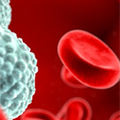| 1.
|
Inna Senina, John Sibert, Patrick Lehodey,
Parameter estimation for basin-scale ecosystem-linked population models of large pelagic predators: Application to skipjack tuna,
2008,
78,
00796611,
319,
10.1016/j.pocean.2008.06.003
|
|
| 2.
|
Daniel R. Goethel, Terrance J. Quinn, Steven X. Cadrin,
Incorporating Spatial Structure in Stock Assessment: Movement Modeling in Marine Fish Population Dynamics,
2011,
19,
1064-1262,
119,
10.1080/10641262.2011.557451
|
|
| 3.
|
Sibylle Dueri, Blaise Faugeras, Olivier Maury,
Modelling the skipjack tuna dynamics in the Indian Ocean with APECOSM-E – Part 2: Parameter estimation and sensitivity analysis,
2012,
245,
03043800,
55,
10.1016/j.ecolmodel.2012.02.008
|
|
| 4.
|
Lisa A. Kerr, Daniel R. Goethel,
2014,
9780123970039,
501,
10.1016/B978-0-12-397003-9.00021-7
|
|
| 5.
|
Jeerawan Suksamran, Yongwimon Lenbury,
Stability analysis and traveling wave solution of a reaction–diffusion model for fish population incorporating time-dependent recruitment intensity,
2019,
2019,
1687-1847,
10.1186/s13662-019-2140-2
|
|
| 6.
|
Alistair J. Hobday, Jock W. Young, Osamu Abe, Daniel P. Costa, Robert K. Cowen, Karen Evans, Maria A. Gasalla, Rudy Kloser, Olivier Maury, Kevin C. Weng,
Climate impacts and oceanic top predators: moving from impacts to adaptation in oceanic systems,
2013,
23,
0960-3166,
537,
10.1007/s11160-013-9311-0
|
|
| 7.
|
Qiang-Jun Xie, Ze-Rong He, Chun-Guo Zhang,
Harvesting Renewable Resources of Population with Size Structure and Diffusion,
2014,
2014,
1085-3375,
1,
10.1155/2014/396420
|
|
| 8.
|
Inna Senina, Patrick Lehodey, John Sibert, John Hampton,
Integrating tagging and fisheries data into a spatial population dynamics model to improve its predictive skills,
2020,
77,
0706-652X,
576,
10.1139/cjfas-2018-0470
|
|
| 9.
|
Inna N. Senina, Patrick Lehodey, John Hampton, John Sibert,
Quantitative modelling of the spatial dynamics of South Pacific and Atlantic albacore tuna populations,
2020,
175,
09670645,
104667,
10.1016/j.dsr2.2019.104667
|
|
| 10.
|
Blaise Faugeras, Olivier Maury,
Modeling fish population movements: From an individual-based representation to an advection–diffusion equation,
2007,
247,
00225193,
837,
10.1016/j.jtbi.2007.04.012
|
|
| 11.
|
Chontita Rattanakul, Yongwimon Lenbury, Jeerawan Suksamran,
Analysis of advection-diffusion-reaction model for fish population movement with impulsive tagging: stability and traveling wave solution,
2019,
2019,
1687-1847,
10.1186/s13662-019-2153-x
|
|
| 12.
|
James T Thorson, Albert J Hermann, Kevin Siwicke, Mark Zimmermann, Sam Subbey,
Grand challenge for habitat science: stage-structured responses, nonlocal drivers, and mechanistic associations among habitat variables affecting fishery productivity,
2021,
78,
1054-3139,
1956,
10.1093/icesjms/fsaa236
|
|
| 13.
|
Nicolas Barrier, Matthieu Lengaigne, Jonathan Rault, Renaud Person, Christian Ethé, Olivier Aumont, Olivier Maury,
Mechanisms underlying the epipelagic ecosystem response to ENSO in the equatorial Pacific ocean,
2023,
00796611,
103002,
10.1016/j.pocean.2023.103002
|
|
| 14.
|
RBC Lundgreen, A Nielsen, M Krüger-Johnsen, D Righton, M Mion, K Radtke, M Plikshs, AJ Leskelä, J Raitaniemi, CA Griffiths, M Casini, U Krumme, K Hüssy,
Examining fish movement in terms of advection or diffusion: a case study of northeastern Atlantic cod,
2022,
691,
0171-8630,
115,
10.3354/meps14065
|
|
| 15.
|
Nicolas Barrier, Olivier Maury, Roland Seferian, Yeray Santana‐Falcón, Alex Tidd, Matthieu Lengaigne,
Assessing the Time of Emergence of Marine Ecosystems From Global to Local Scales Using IPSL‐CM6A‐LR/APECOSM Climate‐To‐Fish Ensemble Simulations,
2025,
13,
2328-4277,
10.1029/2024EF004736
|
|
| 16.
|
Laureline Dalaut, Nicolas Barrier, Matthieu Lengaigne, Jonathan Rault, Alejandro Ariza, Mokrane Belharet, Adrien Brunel, Ralf Schwamborn, Mariana Travassos-Tolotti, Olivier Maury,
Which processes structure global pelagic ecosystems and control their trophic functioning? Insights from the mechanistic model APECOSM,
2025,
00796611,
103480,
10.1016/j.pocean.2025.103480
|
|
| 17.
|
Johannes Krotz, Juan M. Restrepo, Jorge Ramirez,
A Dynamic Likelihood Approach to Filtering Transport Processes: Advection-Diffusion Dynamics,
2025,
00219991,
114089,
10.1016/j.jcp.2025.114089
|
|
| 18.
|
2025,
1,
10.5194/sp-5-opsr-13-2025
|
|













 DownLoad:
DownLoad: